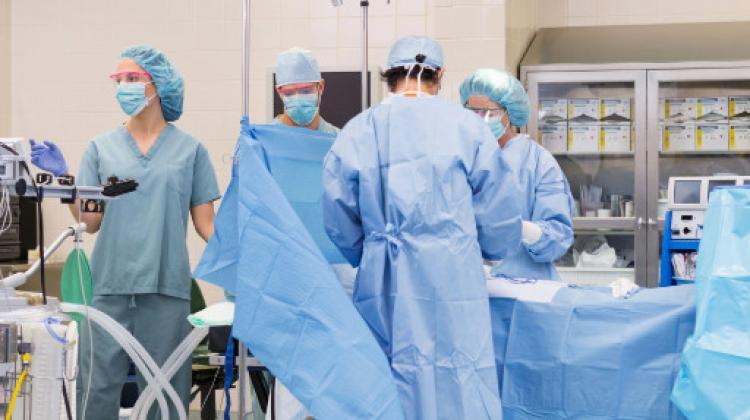A cut above the rest: Scientists develop device for checking sharpness of surgical drills BEFORE being used in ops
 Credit: Fotolia
Credit: Fotolia
A new software for checking how sharp - or blunt - surgical drills are before they’re used in operations has been developed by scientists in Silesia.
Dr. Marcin Basiaga and his team at the Faculty of Biomedical Engineering of the Silesian University of Technology and scientists from the company Rudpol-OPA, wanted to address the perennial problem facing surgeons of not knowing how much wear their instruments had had.
Cutting tools, in particular surgical drills, are currently the most commonly used and most numerous group of tools in surgical procedures, including orthopaedics and traumatology.
Dr. Basiaga said: “Performing surgical procedures using worn or blunt cutting tools poses a threat to the patient`s health, because drilling in bone with a worn drill generates high temperature, which causes thermal necrosis (bone necrosis), and this in turn can lead to numerous postoperative complications.”
“So far, drill quality assessment has been carried out with the naked eye, which in turn is burdened with large error and can lead to numerous postoperative complications.”
But now, with the help of the new software, the degree of wear can be assessed before surgery.
Basiaga said: “The device will allow for the withdrawal of instruments with excessive wear. As a result, the number of postoperative complications resulting from the use of poor-quality instruments will be reduced.”
The device works by first having a drill is inserted into it and “then, thanks to special software, the device automatically analyses the condition of the drill and compares it with its image database. On this basis, it verifies with 100% certainty whether the drill is usable or not,” Basiaga said.
The prototype has already been tested by medical staff (sterilization room personnel) and positively assessed; at their suggestion, scientists reduced the dimensions of the device.
Rudpol-OPA now plans to present the solution at an industry conference. The commercialisation of the device is expected later this year. The estimated cost of one machine is several thousand zlotys.
The research and development project took a year and a half and received funding from the Polish Agency for Enterprise Development.
PAP - Science in Poland, Agnieszka Kliks-Pudlik
akp/ agt/ kap/
tr. RL
Przed dodaniem komentarza prosimy o zapoznanie z Regulaminem forum serwisu Nauka w Polsce.














